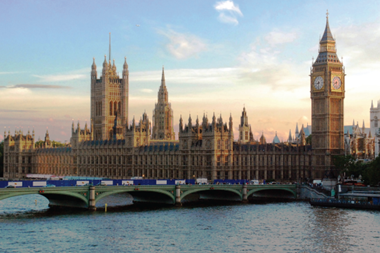UK - The Church of England (CofE) has revealed the pension deficit of its Funded Clergy Pension Scheme had increased to £352m (€411.4m) by the end of 2008.
A second report published by the CofE on the impact of the credit crunch and recession on the pension scheme, which covers the benefits earned by the C0fE clergy from 1 January 1998, showed since the last actuarial valuation of the fund at 31 December 2006 the deficit of £141m had more than doubled to £352m in two years.
Around 75% of the deterioration in the funding level was attributed to a fall in share prices, while the remaining 25% was the result of a reduction in yields on government bonds, which left the market value of the assets of the scheme at £461m at the end of 2008.
The document - which followed an initial 'scene-setting' report by the Archbishops' Task Group in March 2009 - said the CofE "faces difficult choices over the future of its clergy pension scheme" as the pensions board has already increased employer contributions from the beginning of 2010.
But the report noted: "Unless action is taken, far larger increases look unavoidable from 2011 even if the financial markets recover somewhat before the next formal valuation of the pension fund at the end of 2009."
Currently dioceses contribute £7,797 to the pensions board for each eligible member of the clergy - equivalent to 39.7% of the national minimum stipend - however this will increase to 45%, or £8,838, from January 2010, and could increase to 57% from 2011.
Authors of the report claimed this is "unaffordable" so some "significant changes to the present pension scheme will be needed" to reach a target contribution rate of 42% - nearly double the rate when the scheme was introduced in 1998.
The Task Group said it had not identified a "recommended option" but instead had outlined three possible models that differ in terms of risk:
As each of these models would need to cost 42%, they share certain features such as contracting into the State Second Pension (S2P), limiting annual increases to price inflation, raising pension age from 65 to 68 and changing the accrual period for future service from 40 years to 43.
A consultation on the three proposed methods is being held until 31 October 2009, after which the Task Group will make its recommendation to the Archbishops' Council in November, with a final proposal expected to be placed before the General Synod in February 2010 ahead of a full consultation with scheme members.
Changes to the pension scheme were last made in 2007 as the retirement age, benefit accrual and contribution rates all came under review in an attempt to address increased longevity, government regulation and low investment returns. (See earlier IPE article: Church of England to debate pension revamp)
Comments on the proposals should be submitted to pensionstaskgroup@c-of-e.org.uk
If you have any comments you would like to add to this or any other story, contact Nyree Stewart on + 44 (0)20 7261 4618 or email nyree.stewart@ipe.com














No comments yet